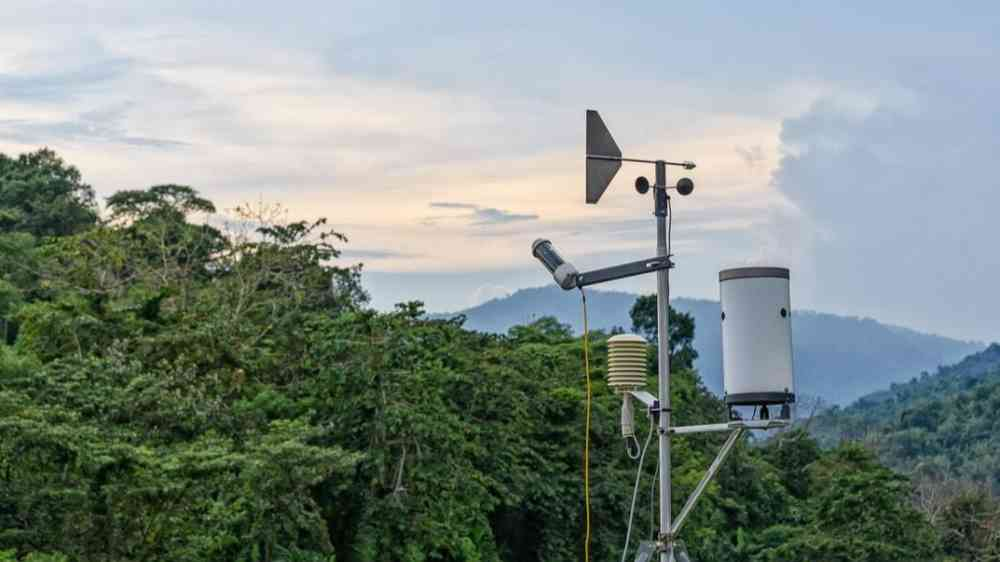
Introduction
Weather is one of the most critical factors influencing aviation safety worldwide. In Tanzania, a country with diverse terrain and rapidly expanding air traffic, accurate and timely meteorological information is essential for safe flight operations. From coastal storms to fog in highland areas, Tanzania’s variable weather presents consistent risks for aviation. This article explores how Tanzania is strengthening its meteorological capabilities to improve aviation safety, the role of the Tanzania Meteorological Authority (TMA), challenges in forecasting infrastructure, and the broader implications for pilots, air traffic controllers, and airline operators.
Tanzania’s Weather Profile and Aviation Risks
Tanzania’s climate is characterized by a mix of tropical and equatorial weather systems. The country’s geography includes highlands, the Great Rift Valley, and extensive coastal areas—all of which are susceptible to weather phenomena that can endanger flights. Key aviation-related weather risks in Tanzania include:
- Heavy rain and thunderstorms during the March–May and October–December rainy seasons.
- Strong coastal winds and sea breezes, particularly around Dar es Salaam and Zanzibar.
- Low visibility due to morning fog in high-altitude areas like Kilimanjaro and Arusha.
- Sudden wind shear that can occur in mountainous zones, affecting aircraft on approach or takeoff.
Accurate forecasting and dissemination of this weather information are critical for flight planning and air traffic management, especially at major airports such as Julius Nyerere International Airport (JNIA), Kilimanjaro International Airport, and Mwanza Airport.

The Role of the Tanzania Meteorological Authority (TMA)
The Tanzania Meteorological Authority (TMA) is the designated body responsible for providing weather services to the aviation sector. TMA operates under the Ministry of Works, Transport and Communication and is tasked with:
- Monitoring weather conditions across Tanzania using a network of synoptic weather stations, radar systems, and satellite data.
- Issuing aerodrome forecasts (TAFs) and meteorological reports (METARs) for domestic and international airports.
- Delivering real-time weather updates to air traffic controllers and flight crews.
- Providing briefing services to pilots prior to departure.
- Collaborating with the Tanzania Civil Aviation Authority (TCAA) and ICAO to ensure compliance with global aviation weather standards.
TMA plays a critical role in ensuring that pilots and flight dispatchers receive reliable weather data necessary for safe decision-making during flight planning and operations.
Technological Upgrades in Forecasting Systems
In recent years, TMA has undertaken significant steps to modernize its forecasting capabilities. One key development was the deployment of the Weather Information System for Africa (WISER) in partnership with the UK Met Office and supported by the World Meteorological Organization (WMO).
Through this initiative, Tanzania upgraded its ability to gather and analyze real-time weather data using:
- Doppler weather radars for detecting storm intensity and movement.
- Automatic Weather Stations (AWS) to increase the density and frequency of data collection.
- Numerical weather prediction models tailored to East African conditions.
- Web-based platforms and SMS alerts for timely communication of warnings.
As of 2024, TMA also introduced mobile-accessible pilot briefing tools to support general aviation users operating in remote regions.
Integration with Air Navigation Services
The effectiveness of aviation meteorology depends not just on data collection but also on how this information is integrated into the daily flow of air traffic operations. In Tanzania, TMA works closely with the Tanzania Airports Authority (TAA) and TCAA to ensure continuous weather monitoring at all major airports.
Meteorological staff are stationed at control towers at JNIA, Kilimanjaro, and Zanzibar, allowing for direct coordination with air traffic controllers. This close integration enables:
- Real-time adjustments to runway usage based on wind conditions.
- Preemptive communication of hazardous weather to en-route aircraft.
- Coordination with regional air traffic control centers to avoid weather-related delays.
Challenges in Service Delivery
Despite progress, Tanzania’s aviation meteorology still faces several challenges. Key among these are:
- Insufficient coverage in remote regions, particularly in western and southern Tanzania where general aviation traffic is increasing.
- Inconsistent data relay systems, particularly when transitioning between manual and automated stations.
- Limited specialized meteorological personnel, with staffing shortages affecting smaller airports.
- Budget constraints that limit investment in continuous training and technology upgrades.
These constraints pose risks to flight safety, particularly for small operators and humanitarian flights that often operate under visual flight rules (VFR) and require precise weather updates.
Capacity Building and International Support
To address these limitations, TMA has been actively involved in regional capacity-building initiatives. Through the African Ministerial Conference on Meteorology (AMCOMET) and ICAO’s MET Panel, Tanzania has sent staff for advanced training on satellite meteorology, aviation weather codes, and alert issuance protocols.
International partners, such as the Japan International Cooperation Agency (JICA), have provided both funding and technical assistance for radar installations and meteorological education programs. Collaborative projects with the South African Weather Service (SAWS) have also enhanced knowledge transfer in aviation meteorology.
Impact on Aviation Safety
Improved forecasting has had a noticeable impact on operational safety. Pilots now receive more detailed TAFs and METARs, which allow for better route planning and fuel management. At Kilimanjaro International Airport, for instance, the introduction of more accurate fog forecasts has led to a reduction in weather-related delays and diversions.
Moreover, TMA’s provision of SIGMETs (Significant Meteorological Information) for volcanic ash or severe turbulence has enhanced long-haul flight safety in Tanzanian airspace. These advancements help prevent mid-flight weather surprises and reduce the likelihood of incidents tied to atmospheric instability.
Future Outlook
Looking ahead, Tanzania plans to expand its network of weather stations and invest in machine learning models for localized forecasting. The government also aims to digitize historical weather data to improve predictive accuracy, especially for rare but high-risk events like tropical cyclones.
Efforts are underway to integrate aviation meteorology more fully into Safety Management Systems (SMS) and State Safety Programs (SSP), aligning with ICAO’s Global Aviation Safety Plan (GASP).
Conclusion
As Tanzania’s aviation industry continues to grow, reliable and sophisticated weather forecasting becomes increasingly vital. The Tanzania Meteorological Authority has made considerable strides in improving meteorological services, but further investments in infrastructure, staffing, and regional collaboration are needed to ensure sustainable progress. With continued support and modernization, weather forecasting will remain a cornerstone of aviation safety in Tanzania’s skies.


